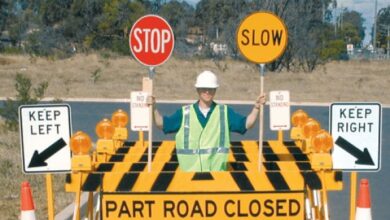Capture the Wild – Your Guide to a Photography Course
Have you ever felt the thrill of a kookaburra’s laugh echoing through the bush, or the serene grace of a kangaroo silhouetted at dusk, and desperately wanted to freeze that moment in time?
For many, the call of the wild is intertwined with a desire to capture its raw, untamed beauty.
Yet, moving beyond a simple snapshot to create a powerful, evocative image requires more than just a good camera.
This is where a dedicated wildlife photography course can transform your passion into skill, turning fleeting moments into lasting visual legacies.
A structured wildlife photography course does more than just teach you about aperture and shutter speed; it immerses you in the art and science of seeing, understanding, and respecting the natural world through your lens.
Why Enrol in a Wildlife Photography Course?
You might be an enthusiastic amateur with a new DSLR or a seasoned traveller with a smartphone full of holiday snaps. Whatever your starting point, formalising your learning offers profound advantages.
- Master Your Gear, Beyond Auto Mode
Most of us start by using our cameras on automatic. It’s safe, but it’s limiting. A quality wildlife photography course will demystify the exposure triangle—aperture, shutter speed, and ISO.
You’ll learn why you’d choose a fast shutter speed to freeze the wingbeat of a rainbow lorikeet, or a wide aperture to blur a background and make a sleepy wombat’s face pop with sharpness.
This technical knowledge is the foundation upon which all creative photography is built, giving you control instead of leaving it to the camera’s processor.
- Develop the “Naturalist’s Eye”
Technical skill is useless without an artistic vision. A great wildlife photography course teaches you to see light, composition, and behaviour. You’ll learn to anticipate an animal’s next move, to recognise how the golden hour light of an Australian afternoon can transform a landscape, and how to compose an image that tells a story. It’s about learning the difference between a picture of an animal and a portrait that captures its essence. - Learn Ethical Fieldcraft
This is perhaps the most critical lesson. Getting the perfect shot should never come at the expense of the subject’s welfare. A reputable wildlife photography course will instil a strong ethical code. You’ll learn how to approach wildlife without causing stress, the importance of maintaining a safe distance (for you and them), and how to respect habitats. Organisations like the Australian Museum offer fantastic resources on local fauna, and understanding an animal’s behaviour is the first step to photographing it ethically. For instance, getting too close to a nesting bird can lead to nest abandonment, a consequence no photograph is worth. - Connect with a Like-Minded Community
Embarking on a photographic journey can sometimes feel solitary. Enrolling in a wildlife photography course connects you with a community of fellow enthusiasts. The shared experiences, constructive critiques, and collective excitement when someone captures a stunning image are invaluable. This network can become a source of ongoing inspiration, knowledge exchange, and even lifelong friendships forged in the love of the wild.
What to Expect from a Comprehensive Course
A well-structured wildlife photography course is typically a blend of theoretical learning and practical, in-the-field experience.
The Classroom Component (Theory):
Before you even step into the bush, you’ll cover the essentials in a classroom or online setting. This includes:
- Camera Fundamentals: A deep dive into your camera’s settings and menus.
- The Art of Composition: Learning the rule of thirds, leading lines, negative space, and how to use them effectively.
- Understanding Light: How to work with harsh midday sun, soft overcast light, and the magic of sunrise and sunset.
- Wildlife Ethics: A non-negotiable module on how to be an responsible photographer.
- Introduction to Editing: Most courses will introduce you to post-processing software like Adobe Lightroom, teaching you how to subtly enhance your images to realise their full potential.
The Field Component (Practice):
This is where the magic happens. A guided field trip, often led by an experienced photographer, allows you to apply your new skills in a real-world setting. You’ll visit locations known for their wildlife, such as a national park, a coastal headland, or a wetland sanctuary.
Here, your instructor can provide real-time feedback on your technique, help you spot opportunities, and share their own hard-earned secrets for finding and photographing elusive subjects.
The Critique Session:
A crucial, yet often daunting, part of any good wildlife photography course is the critique session. After a field trip, students submit their best images for review. This isn’t about criticism; it’s about constructive, guided analysis. An expert eye can show you how to strengthen your composition, correct your exposure, or see a missed opportunity, accelerating your learning curve far more than practicing in isolation ever could.
Essential Gear to Get You Started
One of the barriers people perceive is the need for expensive equipment. While pros use high-end gear, you can start with a surprisingly minimal kit.
- The Camera: A DSLR or a mirrorless camera with interchangeable lenses is ideal. However, many bridge cameras with powerful zoom lenses are excellent for beginners. The key is having manual controls.
- The Lens: This is often more important than the camera body. For wildlife, you need reach. A telephoto lens (e.g., 200mm or 300mm) is essential for capturing animals without disturbing them. A wildlife photography course will often have loaner lenses, allowing you to try before you invest.
- A Sturdy Tripod: This is your best friend for achieving sharp images, especially in low light. It forces you to slow down and consider your composition carefully.
- Patience and Respect: These are your most important tools. They cost nothing but are invaluable.
Finding the Right Course for You
Australia is brimming with opportunities to learn. When searching for a wildlife photography course, consider the following:
- Instructor Credentials: Look for a course run by a photographer whose work you admire and who has a proven track record.
- Class Size: Smaller groups mean more one-on-one time with the instructor.
- Location and Focus: Some courses specialise in bird photography, others in marine life or outback landscapes. Choose one that aligns with your interests.
- Level of Difficulty: Ensure the course is suited to your skill level, whether you’re a beginner, intermediate, or advanced photographer.
For those looking to formalise their skills further, or even turn a passion into a profession, government-supported training pathways can be an excellent resource.
Organisations like TAFE NSW offer a range of photography qualifications, from short courses to full diplomas, which can include specialised modules on nature and wildlife photography. You can explore their creative arts courses here: TAFE NSW Creative Arts Courses.
The Ethical Photographer’s Pledge
A world-class wildlife photography course will embed ethics into its core curriculum. As a photographer, you become an ambassador for the natural world. Your responsibility is to:
- Prioritise Welfare: The subject’s well-being is more important than the photograph.
- Respect Habitat: Stay on marked paths and avoid trampling sensitive flora.
- Know the Rules: Familiarise yourself with local regulations, especially in national parks. For guidance on interacting with wildlife in Australia, a great resource is the Australian Government’s official website on park policies and wildlife protection.
- Use Your Voice: Your images can be a powerful tool for conservation, highlighting the beauty of what we stand to lose and the importance of protecting it.
From Learning to Creating: Your Next Steps
Completing a wildlife photography course is not the end; it’s the beginning of a more profound, more skilled, and more rewarding journey. The techniques you master will become second nature, allowing you to focus on the creative and experiential aspects of being in nature.
To see these principles in action, watching experienced photographers can be incredibly educational. For a visual primer on the skills you might learn, this excellent YouTube tutorial, “6 Wildlife Photography Tips I Wish I Knew Earlier“, covers some foundational techniques that are often emphasised in a good wildlife photography course.
The wild is calling, filled with stories waiting to be told. The cockatoo squawking in the gum tree, the platypus gliding through a creek, the powerful stride of an emu across the plains—these are the moments that define the Australian landscape.
By investing in a wildlife photography course, you equip yourself with the skills not just to take a picture, but to capture a feeling, to tell a story, and to preserve a fragile piece of our natural heritage. So, pick up your camera, find a course that inspires you, and step into the frame. Your adventure in photography is about to begin.
You can also read about: The Future of Smile Design: Integrating Implants and Veneers




